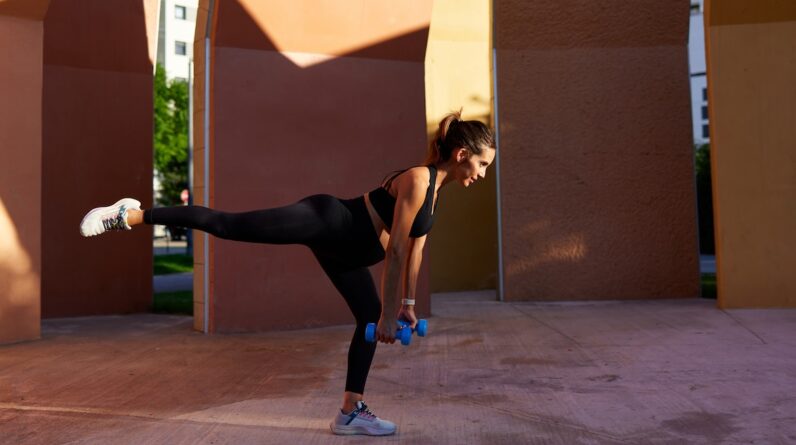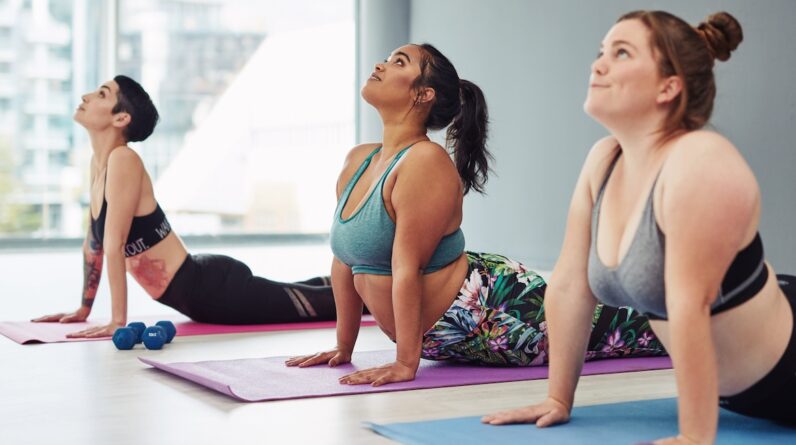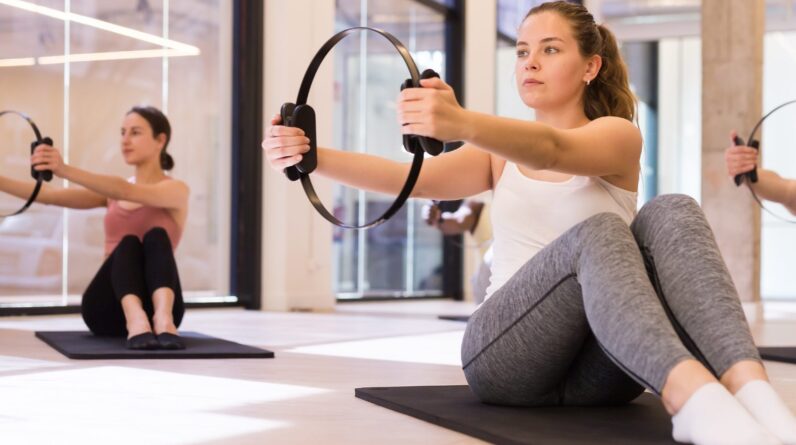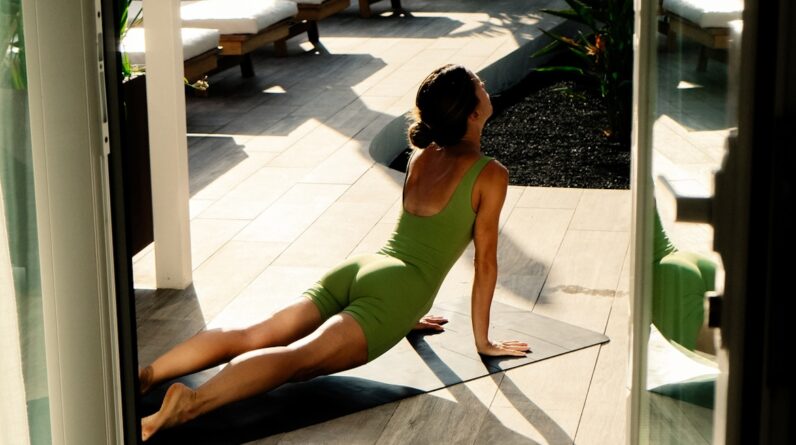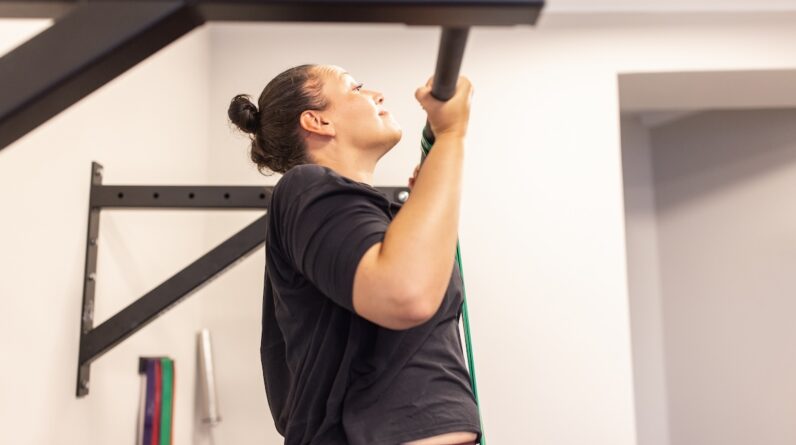
Accomplishing your first chin-up is a fitness milestone that’s well worth working toward. After all, pulling your entire body weight over a bar isn’t just impressive—it comes with many benefits.
If you’re still working your way toward one non-assisted chin-up, you’ll want to add a few chin-up progression exercises to your upper-body routine to help you get there.
Below, Miriam Shestack, CPT, a strength coach and group fitness instructor at Equinox in New York City, demonstrates five chin-up progression exercises that can help you nail down your first (and second and third) chin-up.
In This Article
-
01
Benefits
-
02
Progressions
But first: What are the benefits of chin-ups, anyway?
Chin-ups help you achieve a stronger—and more defined—upper body and core.
“Specifically, chin-ups target the biceps, the posterior deltoids—aka delts—of the shoulders, and the teres major and latissimus dorsi muscles—aka lats—of the back,” says Fabian Traugutt, CPT, a certified personal trainer at Life Time.
Chin-ups also work your core muscles because they stay engaged and keep you stable as you pull yourself up over the bar.
“Strengthening your back, core, and upper body is a great way to improve your posture and can help you avoid injury in the long run,” Traugutt says.
Chin-ups also help improve your grip strength because the movement requires you to keep a stable grip on the bar while you pull yourself up. Working on your grip strength may not be as top of mind as sculpting a more defined back, but it just so happens to be one of the main biomarkers for good health.
People with a stronger grip were observed to have a lower risk of many chronic diseases, including type 2 diabetes, cardiovascular disease, stroke, chronic kidney and liver disease, some cancers, as well as age-related muscle loss and fragility fractures, according to a 2024 research review in the Journal of Health, Population, and Nutrition.
“Strengthening your back, core, and upper body is a great way to improve your posture and can help you avoid injury in the long run.” —Fabian Traugutt, CPT
Why you may not be able to do a chin-up, plus progressions to get you there
1. You have reduced grip strength
“You may be having trouble with chin-ups because of a lack of proper strength training, and the most common weakness is a person’s grip and forearm strength,” Traugutt says. “I always tell my clients to squeeze their dumbbells or the barbell during every exercise to enhance their grip and forearm strength,” Traugutt says.
So while you’ll want to make it a habit to squeeze your weights a little harder during workouts, you should also try dead hangs to help improve your grip strength:
- Use a secure overhead bar. You don’t want to jump straight into a dead hang, so use a step or bench so you can easily reach the bar with your arms.
- Grip the bar with an overhand grip with your palms facing away from you. Aim to keep your arms shoulder-width apart.
- Move your feet off the step or bench so you’re hanging on the bar.
- Hang onto the bar, keeping your arms completely straight. Stay relaxed and take a few deep breaths.
- Hang for 10 seconds if you’re new to the exercise. Work your way up to 45 seconds to 1 minute at a time.
- Slowly step back onto the step or bench before releasing your arms.
- Repeat up to three times.
In addition to working your hand and wrist flexors, which seriously helps with grip strength, dead hangs also work your forearms, core, shoulders, and upper back.
2. You don’t have enough shoulder and arm strength
The chin-up works many different muscles in your upper body—namely, your biceps, delts, and lats, Traugutt says. That means if you can’t do a chin-up, you probably don’t (yet) have the arm and shoulder strength to hoist yourself up.
Working your way up to a chin-up requires you to strengthen these muscles, and scapular retractions (also called scapular depressions) are one of the best exercises to help you get there:
- Use a secure overhead bar. Use a step or bench so you can easily reach the bar with your arms.
- Grip the bar with an overhand grip (palms facing away from you) that’s wider than shoulder-width.
- Hang at arm’s length without letting your arms come out of the sockets.
- Begin by pulling your shoulder blades down and together, without moving your arms (your body will move up slightly).
- Hold this position for 5 seconds.
- Then, relax and return to your starting position.
- Don’t forget to take quick deep breaths.
Scapular retractions/depressions also work your wrist flexors (grip strength), forearms, and core, along with your shoulders and upper back.
To really get your upper body fired up, try “negatives” or slow, eccentric drops next. This move skips the concentric part of a chin-up where you’re pulling yourself up and instead simply focuses on the eccentric, or lowering, part of the workout.
Here’s how to do it:
- Start with your chin above the bar. Use a step or bench to easily reach the bar with your arms.
- Pull your shoulder blades together.
- Slowly lower yourself down from the bar while maintaining a good tempo and control.
- Finish in a “dead hang” position with your arms fully extended over your head.
- Start by performing three sets of 8 to 10 reps, and resting for 1 minute between each set.
Friendly reminder: Warming up with a few upper-body stretches before your workout can help prime your body for your workout and help prevent injuries.
“Stretching the upper body consistently will give you a wider range of motion within your shoulders and back, and doing this will make it so much easier to pull yourself up towards the bar,” Traugutt says.
3. You’re lacking back strength
A chin-up requires strength in your back muscles—namely your lat muscles, which is the largest muscle in your upper body. Doing low-bar rows, also called inverted rows or bodyweight rows, is a great way to strengthen those back muscles. Inverted rows also work your hand and wrist flexors (grip strength), forearms, biceps, and core.
Here’s how to do low bar rows:
- Set a barbell or pull-up bar at around waist height. Lie below the bar facing up.
- Grab the bar with an overhand grip (palms facing away from you), keeping your hands about shoulder-width apart.
- Pull yourself toward the bar, stopping once your chest touches the bar. Keep your body in a straight line from your shoulders to your feet (to protect your spine).
- Reverse the motion, maintaining your posture, until your arms are fully extended.
- Start by performing 3 sets of 10 reps, and resting for 1 minute between each set.
4. You’re lacking core strength
When you’re doing a chin-up, your core muscles kick in to keep your entire body stable as you pull yourself up over the bar, Traugutt says.
While there are many ways to build core strength, farmer’s carries—sometimes called farmer’s walks—are one of the best (and, sometimes, underrated) exercises to work your deep ab and back muscles that play a big part in your chin-up game. They’re also great for improving grip strength.
Here’s how to do a farmer’s carry:
- Start by selecting appropriately weighted dumbbells or kettlebells and placing them on the floor on either side of your body.
- Reach down, bending at your hips and knees, and grasp the dumbbells in each hand. Deadlift them up by extending your hips and knees, keeping tension throughout your core and a neutral spine.
- Hold the dumbbells or kettlebells at your side with a firm grip. Stand tall, keeping your shoulders back and your core tight.
- Initiate the movement by walking forward at an even pace with your eyes focused straight ahead of you.
- Complete the desired amount of steps, come to a stop, and place the dumbbells or kettlebells down while keeping a tight core and neutral spine.
- Rest for 1 to 3 minutes and repeat until you reach your desired amount of sets.
Well+Good articles reference scientific, reliable, recent, robust studies to back up the information we share. You can trust us along your wellness journey.
- Vaishya R, Misra A, Vaish A, Ursino N, D’Ambrosi R. Hand grip strength as a proposed new vital sign of health: a narrative review of evidences. J Health Popul Nutr. 2024 Jan 9;43(1):7. doi: 10.1186/s41043-024-00500-y. PMID: 38195493; PMCID: PMC10777545.







